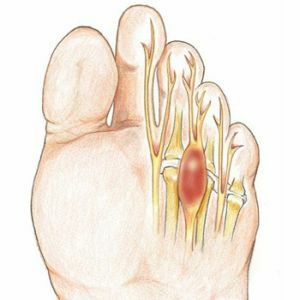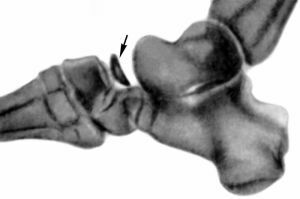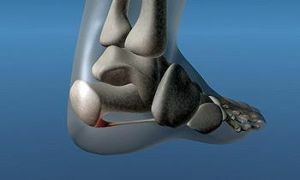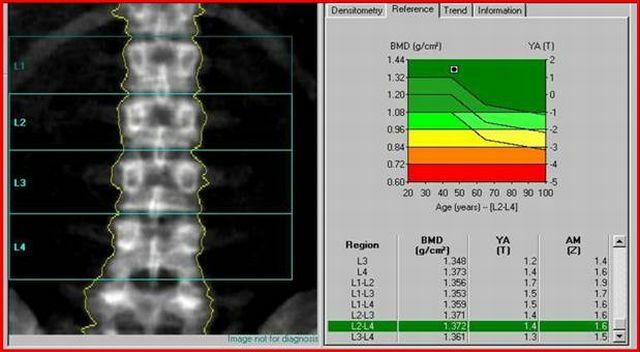 Osteochondropathy is a number of diseases that occur in the form of aseptic necrosis.
Osteochondropathy is a number of diseases that occur in the form of aseptic necrosis.
This process develops in spongy bones. Aseptic necrosis is chronic and often leads to micro-fractures, which are complications.
Osteochondropathy develops as a result of exposure to the body of various factors: traumatic, metabolic, congenital and so on.
Contents of the article
- What is Keller's disease?
- What leads to the development of pathology?
- Scaphoid Pathology
- Symptoms
- Therapy Methods
- Preventative Measures
- If I amazed with metatarsal bones
- How to identify?
- Therapeutic measures
- Problems and difficulties
- Folk methods of treatment
- In the dry residue of
What is Keller's disease?
Disease is a kind of osteochondropathy.
It flows in two forms - Keller's disease I and II.
This classification depends on which bones are affected.
In the first type, aseptic necrosis develops in the scaphoid bone, which is located in the center of the foot.
In the second type, the process develops in the heads of metatarsal bones. They, in turn, are located at the base of the toes.
What leads to the development of pathology?
The cause of development of aseptic necrosis in these bones, as well as with other types of osteochondropathy, is the violation of  blood circulation at the site of injury.
blood circulation at the site of injury.
The causes of blood supply disorders have not been fully studied yet.
It is only known that it can affect this process:
- frequent foot traumas, which result in a violation of the structure of the bone tissue itself, as well as a change in the supply of bone to the blood vessels;
- use of uncomfortable and cramped shoes that do not match the size of the foot. This statement is most actual in the case of wearing tight shoes;
- endocrine diseases( thyroid dysfunction, diabetes mellitus);
- congenital platypodia and acquired foot-shaped defects;
- predisposition is hereditary.
Pathology of scaphoid
Let's talk more about this form of the disease. As was said above, with Keller's disease 1 the process is localized in the scaphoid bone of one or both feet.
This disease is typical for children from 8 to 12 years, with more sick boys.
The disease begins on one side, but the scaphoid bone of both feet can be affected simultaneously. Keller's disease is manifested by swelling and swelling, which appear on the inner edge of the outer surface of one foot.
Symptoms of
These phenomena are accompanied by painful sensations, which increase during walking.
For this reason, the child begins to spare his foot, he moves with the support on the outer edge of the foot. Attentive parents can also notice lameness caused by pain.
These symptoms persist for a long time - from several months to a year or more.
Therapy methods

In the photo X-ray in Keller's disease 1
The disease is usually treated conservatively - by unloading the foot and creating conditions for its immobilization, that is, immobility. For this, a plaster cast is applied on the foot.
Typically, the duration of wearing gypsum is four weeks.
After removing the plaster bandage, the movements of the affected leg should be limited for some time.
For more rapid recovery of bone tissue, drugs that improve blood circulation and metabolic processes are used. Analgesics and non-steroidal anti-inflammatory drugs are prescribed for analgesia.
Physiotherapeutic and thermal procedures are also used. Children are recommended to wear orthopedic shoes or insoles. This is necessary to maintain the correct shape of the foot. In advanced cases, sometimes resort to an operative treatment of this disease.
During the operation in the scaphoid bone, two channels are formed, in which new vessels will subsequently germinate. They are needed to improve the nutrition of bone tissue.
As a result of this, the affected bone is quickly restored and the pain is gone. After the operation, physiotherapeutic procedures are prescribed.
With early detection of the disease and timely treatment, complications are almost not observed. The illness ends with the child's recovery.
In the absence of due attention to what is encountered in a non-serious attitude to the problem, a violation of the shape of the scaphoid bone may occur. And this, in turn, leads to flat feet.
Preventive measures
Prevention of Keller's disease I is possible. It is necessary to choose the right footwear for the child, the footwear should be orthopedic.
In addition, children under seven years of age should not receive high physical activity. Particularly closely monitor their children follows parents whose family has already seen cases of this disease.
If metatarsal bone is affected
As mentioned above, Keller's disease affects the head of metatarsal bones. 
More often aseptic necrosis occurs in the head of the second or third bone.
It is quite rare that several bones are affected simultaneously.
As a rule, girls and adolescents aged between ten and twenty are subject to the disease.
There may be family cases of the disease.
How to identify?
The onset of the disease, as a rule, is barely noticeable. In the place of defeat( usually the base of the second and third fingers) there is a painful sensation when walking, and then in a state of rest.
The girl is limp. Particularly painful is walking barefoot or in shoes with a thin sole, on an uneven surface.
Then, on the dorsal surface of the foot at the level of damage, there is edema.
When probing, an enlarged and painful head of the metatarsal bone is determined. After a time, the finger adjacent to this metatarsal bone is shortened, movements in the joint become limited.
The pain can last about two years, and then pass. Without treatment, pain can resume.
Treatment measures
Treatment of this disease, as well as diseases of Koehler I, involves immobilization of the affected limb by applying a plaster bandage on it.
The duration of the application of gypsum depends on the extent of the lesion, the duration of the disease. As a rule, the plaster bandage is worn by  for three to four weeks. After removing it, excessive loads on the foot should be avoided, orthopedic shoes or insoles should be worn.
for three to four weeks. After removing it, excessive loads on the foot should be avoided, orthopedic shoes or insoles should be worn.
In addition, patients are prescribed physiotherapy procedures. For example, iontophoresis. A good therapeutic effect is the massage of the muscles of the foot and lower leg, therapeutic gymnastics.
Analgesics can also be used. Operative intervention is performed only in the late stages of the disease.
Problems and difficulties
Complications of Keller's disease II usually occur when untimely initiation of treatment. This may be micro fractures, deformation of the joint involved in the process, a violation of its motor function.
Prevention of the disease and its complications includes the exclusion of excessive loads on the lower limbs, wearing comfortable and proper shoes, timely detection of endocrine diseases and their treatment, as well as timely treatment of aseptic bone necrosis.
Traditional methods of treatment
Treatment of Keller's disease 2 folk remedies begins with the use of warm baths.
To prepare the solution, it is necessary to dissolve from 150 to 500 grams of sea salt in warm water. After that, the feet fall into the bath for 20 minutes. Then the legs are rinsed and wiped dry.
This simple method allows you to reduce the intensity of pain. But traditional methods of treatment make it possible to alleviate the condition, and complete immobilization of the foot is required for complete cure.
In the dry residue of
So, Keller's disease is a disease that can develop in a person at any age, but more often affects a young organism.
Factors affecting the occurrence of aseptic necrosis are quite a lot. However, the main of them can be called excessive load on the legs and wearing uncomfortable, incorrectly chosen shoes.

Important is the genetic predisposition, which, of course, can not be affected by .But watch out for what the child is wearing.
This is the main way to prevent this disease. This should be remembered by every parent who wants his child to grow up healthy.
After all, this will make it possible to cure the disease more quickly in a conservative way so that there are no negative consequences. Early treatment will also help to avoid surgical treatment, which is carried out only in the late stages of the disease.



